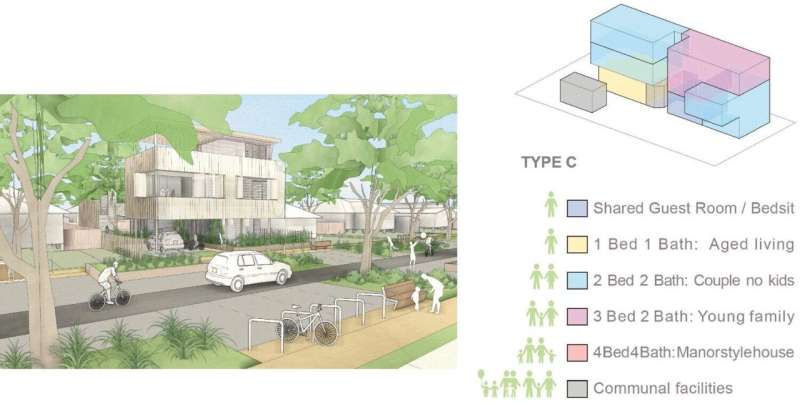This article has been reviewed according to Science X's editorial process and policies. Editors have highlighted the following attributes while ensuring the content's credibility:
fact-checked
trusted source
proofread
Higher density housing needed in Australia—but regions have to be careful

James Cook University researchers say better planning is needed to ensure more sustainable and affordable higher density housing, such as units and apartments, is built in regional centers.
Recent JCU graduate, Sarah Gibson, who completed her Honors degree in the Bachelor of Planning, led a study in which stakeholders in the regional city of Cairns were interviewed about the pros and cons of Medium Density Housing (MDH).
"We defined MDH as housing that fits more people per hectare than a detached dwelling, that met the needs of diverse demographic and income groups and that is built in strategic locations—as infill, close to jobs and services," said Gibson.
She said the main argument for densification is that the low-density, sprawling and car-centric urban form has created many of the environmental and social issues cities now face.
"Sustainable densification is the ability to provide more diverse and affordable housing in existing suburbs whilst maintaining high amenity, liveability and quality of life standards," said Gibson.
JCU's Associate Professor Lisa Law said this is trickier to achieve in sprawling regional cities where car-dependent suburbanization is accepted as the norm.
"Add to this the cost of bringing building supplies to 'remote' locations, a lack of skilled MDH building trades, and soaring insurance costs that make body corporate fees unaffordable—these all make the single, detached dwelling on greenfield land the choice of many developers and homeowners—even if some would prefer an apartment," said Dr. Law.
The researchers talked to developers, architects/building designers, government and industry planners, and real estate agents in Cairns about the problems and solutions.
Gibson said the stakeholders were conscious of the need for densification due to impending land shortages in Cairns and accept these shortages will eventually bring about MDH.
She said although MDH is not the only solution to sustainable urban growth, it must be part of it.
"Stakeholders cited barriers that are well-documented—such as the risk-averse nature of the finance sector—but also note key differences for Cairns such as land constraints in World Heritage Areas, poor public transport, distance from supply chains, soaring insurance costs and susceptibility to cyclones," said Gibson.
Dr. Law said Cairns' stakeholders argue effective MDH infill must be guided by political leadership, strategic planning, and cross-sectoral and community engagement.
"Calls for a suburb-specific strategic planning for MDH in Cairns echoes broader sentiments about the need for regional nuance and understanding in the housing market."
"Vision and foresight about how to urgently address urban densification and housing diversity in regional areas needs collaboration across local and state governments through strategic planning."
"There are opportunities now with the concurrent development of Cairns Regional Council's Towards 2050: Shaping Cairns Growth Strategy and the review of the Far North Queensland Regional Plan," said Dr. Law.
The study is published in the journal Australian Planner.
More information: Sarah Gibson et al, Barriers and opportunities for medium density housing in small, regional cities: stakeholder perspectives from Cairns, Australian Planner (2023). DOI: 10.1080/07293682.2023.2183225
Provided by James Cook University





















